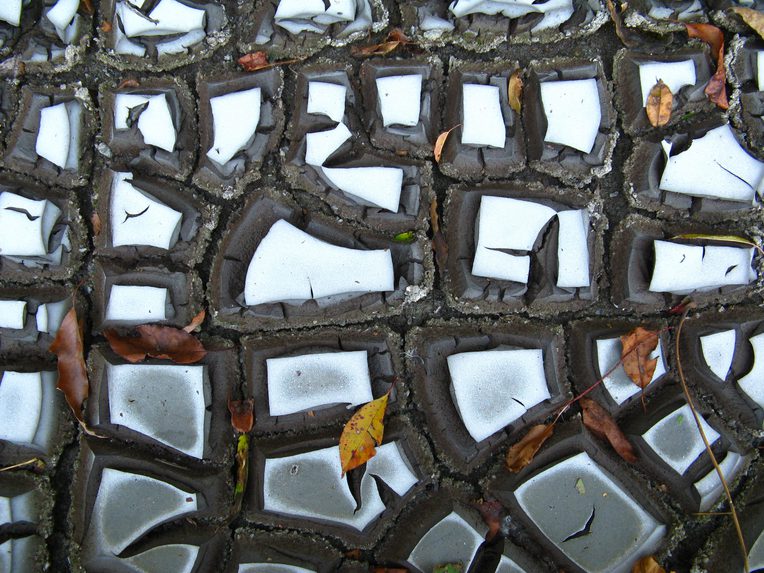Shit
From the Series: Lexicon for an Anthropocene Yet Unseen
From the Series: Lexicon for an Anthropocene Yet Unseen

Most people living in modern industrial (and postindustrial) cities have very limited responsibilities when it comes to the management of their most intimate forms of excreta. This is due to a robust faith in and dependence on infrastructure that exists primarily to blind us from knowing where our “shit ends up” (Hawkins 2003, 40). Milan Kundera (1984, 156) brilliantly seized on this point, writing: “Even though the sewer pipelines reach far into our houses with their tentacles, they are carefully hidden from view, and we are happily ignorant of the invisible Venice of shit underlying our bathrooms, bedrooms, dance halls, and parliaments.”
In his History of Shit, Dominique Laporte (2000, 66) argued that the modern state established itself through its role as “the Grand Collector, the cloaca maxima that reigns over all that shit, channeling and purifying it . . . hiding its places of business from sight.” Due to a number of impressive political and technological feats, much of our waste has been concealed from many of us. The only problem is that such feats are founded, at least in part, on an illusion: a modernist magic trick of sorts. “What makes shit so disturbing and disgusting,” Gay Hawkins (2003, 40) writes, “is that we can never completely escape it, can never get rid of it. It comes back to haunt us, it sticks to us; it has that uncanny capacity to return. The desire for elimination as absolute separation is always thwarted.”
The Anthropocene will offer many lessons for humanity, but one of its most jarring is that we simply can’t hide from our shit any more.

In our desire to distance ourselves from our waste and separate ourselves from the so-called natural environment and its cycles, we have also blinded ourselves to the problems that this distancing poses. With the help of modern technologies, we have constructed the fantasy that we can insulate ourselves from the environment and the broader world, which is made up not only of butterflies and rivers and California condors but also of our shit and that of our pets, not to mention plastic bottles, plastic bags, and the wider array of macro- and microplastics1 (industrial shit par excellence) that have begun to stratigraphically define this new geological epoch. The very real problem is that we cannot separate ourselves from these things. Our shit clogs toilets and sewers lines, while that of our dogs piles up in parks and smears city sidewalks. Our plastics have come to invade the oceans and our bodies (Liboiron 2013), even as our trash heaps up in large mounds. The most pernicious of these waste products is one that we cannot even see with the naked eye: the CO2 that belches out of our cars’ tailpipes.
Modern science has provided us with the powerful insight that in isolating things from their surroundings, we can objectify them and generalize about them in meaningful ways. This is what gives science such great power. A problematic consequence is that in objectifying the world that surrounds us, we have come to believe not only that it exists in a separate domain known as nature, but also that it opens itself up to facile human manipulation and control (Kawa, forthcoming).
It is naive to think that humans have ever lived in perfect harmony with the earth’s ecosystems. Still, we know that for most of humanity’s existence on this planet, people deposited their excrement directly into the soil, feeding seas of microbes while also nourishing plants that, in turn, provided sustenance to humans and other animals. There are currently projects around the world that are looking to reformulate humanity’s relationship to its excrement, with implications for agricultural fertilization (Preneta et al. 2013), energy production (Chen et al. 2014), water conservation (UNICEF 2015), and even urban public life (Chalfin 2014). Can finding better ways of reconnecting with our shit pull us out of this ecological crisis? No one can say for sure. But it has the potential, I believe, to push us toward a different way of thinking ecologically and even to encourage a new sense of political and ethical engagement with our environment. In this new epoch known as the Anthropocene, rather than worrying about humanity overtaking the earth, perhaps we should start taking care of our shit first.
1. Jan Zalasiewicz and colleagues (Zalasiewicz et al. 2016) note that low-density microplastics are found at extreme depths of the ocean, which may have been “ingested by zooplankton and ejected as faecal pellets.”
Chalfin, Brenda. 2014. “Public Things, Excremental Politics, and the Infrastructure of Bare Life in Ghana's City of Tema.” American Ethnologist 41, no. 1: 92–109.
Chen, Yu, Gaihe Yang, Sandra Sweeney, and Yongzhong Feng. 2010. “Household Biogas Use in Rural China: A Study of Opportunities and Constraints.” Renewable and Sustainable Energy Reviews 14, no. 1: 545–49.
Hawkins, Gay. 2003. “Down the Drain: Shit and the Politics of Disturbance.” In Culture and Waste: The Creation and Destruction of Value, edited by Gay Hawkins and Stephen Muecke, 39–52. Lanham, Md.: Rowman and Littlefield.
Kawa, Nicholas. Forthcoming. Amazonia in the Anthropocene: People, Soils, Plants, Forests. Austin: University of Texas Press.
Kundera, Milan. 1984. The Unbearable Lightness of Being. Translated by Michael Henry Heim. New York: Harper.
Laporte, Dominique. 2012. History of Shit. Translated by Rodolphe el-Khoury and Nadia Benabid. Cambridge, Mass.: MIT Press.
Liboiron, Max. 2013. “Plasticizers: A Twenty-First-Century Miasma.” In Accumulation: The Material Politics of Plastic, edited by Jennifer Gabrys, Gay Hawkins, and Mike Michael, 134–43. New York: Routledge.
Preneta, Nick, Sasha Kramer, Baudeler Magloire, and Jean-Marie Noel. 2013. “Thermophilic Co-composting of Human Wastes in Haiti.” Journal of Water, Sanitation, and Hygiene for Development 3, no. 4: 649–54.
UNICEF. 2015. “Water, Sanitation, Hygiene: Statistics.”
Zalasiewicz, Jan et al. 2016. “The Geological Cycle of Plastics and Their Use as a Stratigraphic Indicator of the Anthropocene.” Anthropocene.